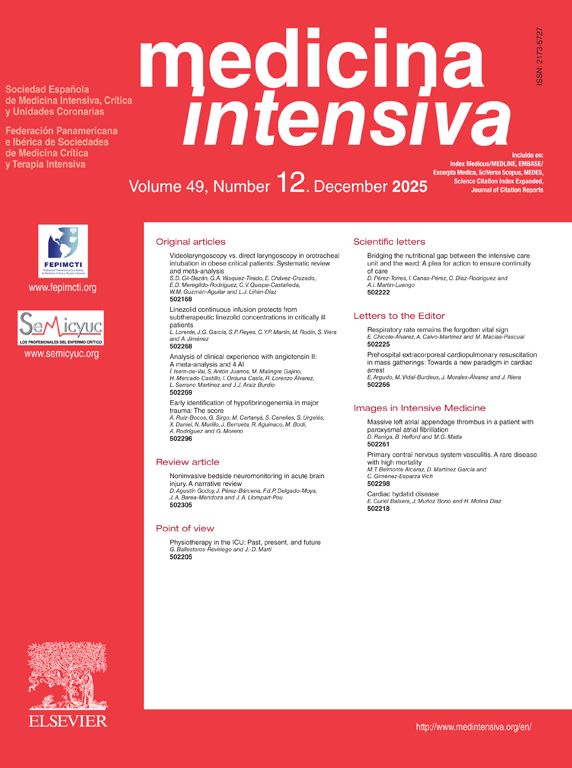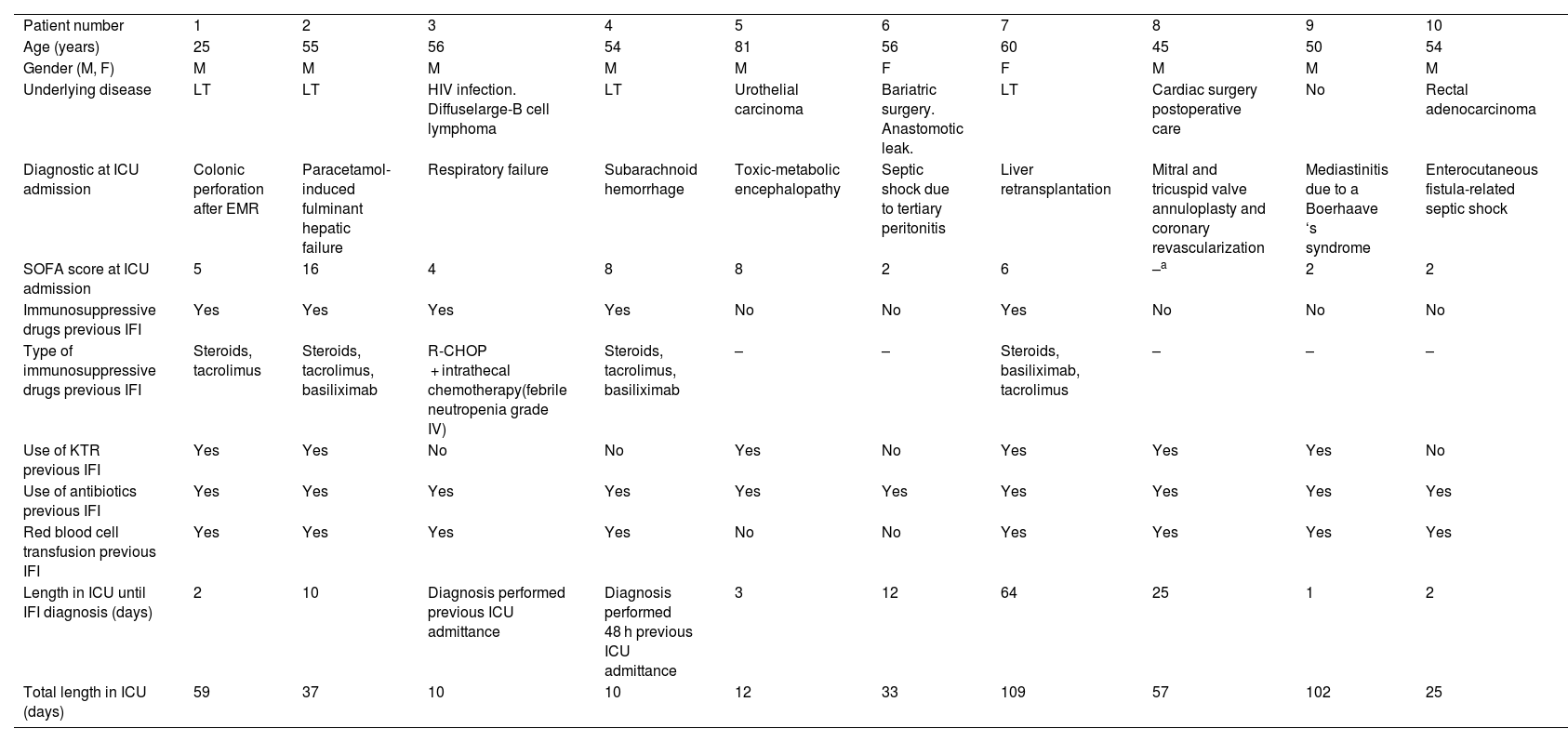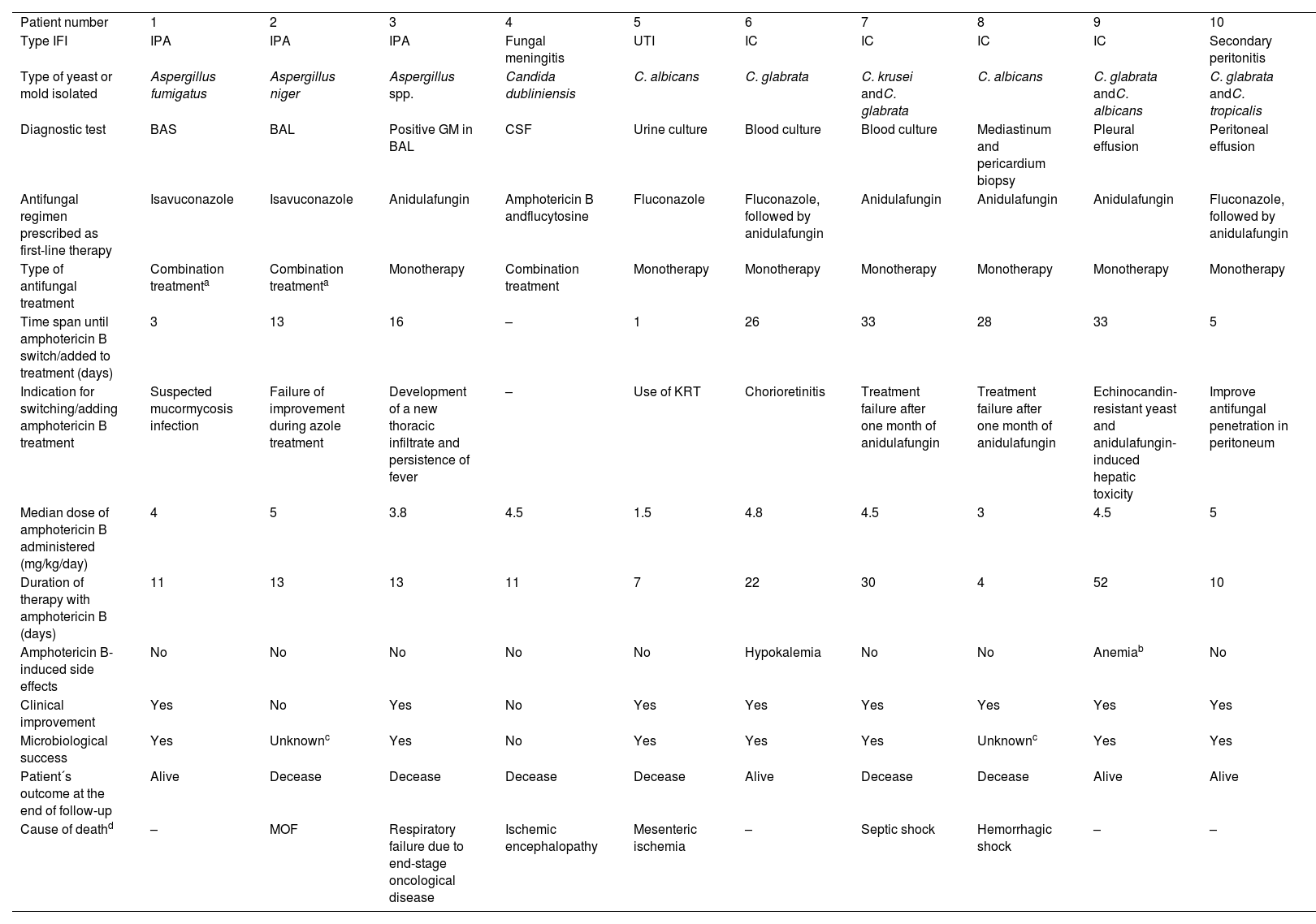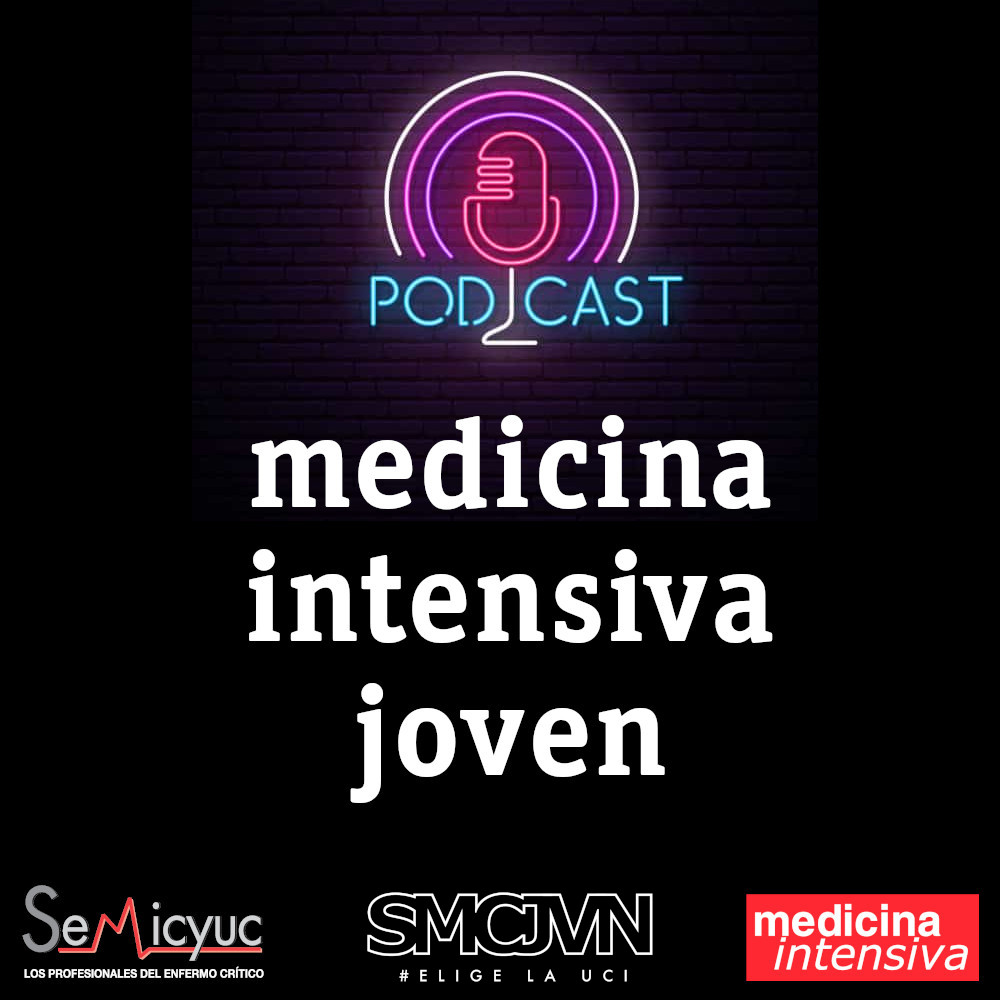Invasive fungal infections (IFI) are an increasingly frequent complication in patients admitted to intensive care units (ICU), and pose a serious challenge to the clinicians who attend critically ill patients.1,2 The patient´s outcome is directly influenced by the inter- and intra-individual pharmacokinetic variability, the need to optimize the antifungal delivery treatment according to site of infection, by emerging fluconazole and echinocandin-resistant Candida spp. infections, and by increasing azole-resistant Aspergillus spp. infections.3,4 Liposomal amphotericin B (L-AmB) presents a good antifungal activity against Candida spp. and Aspergillus spp., and shows an important dose-dependent capability to accumulate in infected tissues, such as the liver, spleen, lung, kidneys and brain, at levels above the minimum inhibitory concentration.5 L-AmB also shows a significant lesser risk of nephrotoxicity and fewer severe drug-related adverse events than conventional deoxycholate AmB.6 Moreover, drug-drug interactions with L-AmB are irrelevant, which is an important factor in critically ill patients. Nonetheless, data on the use of L-AmB in the ICU is still lacking.
We have performed an observational and retrospective study which included all adult patients admitted to an ICU of a Spanish third-level hospital, and who received treatment with L-AmB for an IFI. The study inclusion period spanned from January 2022 to June 2023. Collected data included the patients´ demographics, characteristics of the IFI, antifungal treatment regimens prescribed, L-AMP-induced side effects and outcome. Clinical improvement was defined as amelioration of symptoms and signs associated to the IFI during treatment. Microbiological success was defined as the eradication of the fungal pathogen on the microbiological samples during treatment. Mortality was defined as any demise during follow-up, whereas IFI-related mortality was defined as any death related to IFI. Adverse events were defined as any occurrence of an undesirable event during or following the exposure to the L-AmB. Acute renal injury was defined according to the Kidney Disease: Improving Global Outcomes (KDIGO) Clinical Practice Guideline for Acute Kidney Injury.7 Quantitative variables are shown as mean (or median) ± standard deviation (or interquartile range), whereas qualitative variables are depicted as absolute and relative frequencies. The statistical analysis was carried out using SPSS v. 23.0 (BM Corp, Armonk, NY).
We have included 10 patients. Baseline and clinical characteristics are shown in Table 1. The mean age of the included patients was 53.6 ± 13.8 years. Five patients were considered to be immunosuppressed, including four liver transplant recipients. Three patients were treated for an invasive pulmonary aspergillosis (IPA), whereas seven received L-AmB for an invasive candidiasis (Table 2). The median time elapsed between the admittance in the ICU and the diagnosis of the IFI was 6.5 days (IQR 2–21.8). In two cases, the diagnosis was reached before the patient was admitted to the ICU. Two patients received a combined treatment of isavuconazole and L-AMP, whereas 7 were treated with a monotherapy regimen consisting of L-AmB. L-AmB was only used as first-line therapy in one patient, who had been diagnosed with a Candida dubliniensis meningitis infection. The main cause for the prescription of L-AmB was failure to improve with the first-line treatment (50.0%), mostly with anidulafungin. The median time elapsed between the start of the first-line antifungal treatment and the prescription of L-AmB was 16 days (IQR 4–30). The median duration of L-AmB treatment was 12 days (IQR 9–24), with a median dosage of 4.5 mg/kg/day (IQR 3.6–4.9). Two patients presented a L-AmB related side effect: one patient presented a case of hypokaliemia, which was managed with intravenous potassium supplementation, whereas another patient required a considerable number of blood transfusions due to anemia. It was not necessary to withdraw L-AmB due to side effects in any of the 10 patients. No cases of L-AmB-induced nephrotoxicity were diagnosed (serum creatinine levels, glomerular filtration rate, and nephrotoxic drugs co-administered with L-AmB are shown in Table S1 in Supplementary material). Clinical improvement was attained in 80% of patients. Only 1 patient did not achieve microbiological success. Although six patients (60%) eventually died during follow-up, IFI-related demise was only observed in one patient (10%). The median duration of admittance in the ICU was 35 days (IQR 12–70).
Baseline characteristics of the ten patients included.
| Patient number | 1 | 2 | 3 | 4 | 5 | 6 | 7 | 8 | 9 | 10 |
| Age (years) | 25 | 55 | 56 | 54 | 81 | 56 | 60 | 45 | 50 | 54 |
| Gender (M, F) | M | M | M | M | M | F | F | M | M | M |
| Underlying disease | LT | LT | HIV infection. Diffuselarge-B cell lymphoma | LT | Urothelial carcinoma | Bariatric surgery. Anastomotic leak. | LT | Cardiac surgery postoperative care | No | Rectal adenocarcinoma |
| Diagnostic at ICU admission | Colonic perforation after EMR | Paracetamol-induced fulminant hepatic failure | Respiratory failure | Subarachnoid hemorrhage | Toxic-metabolic encephalopathy | Septic shock due to tertiary peritonitis | Liver retransplantation | Mitral and tricuspid valve annuloplasty and coronary revascularization | Mediastinitis due to a Boerhaave ‘s syndrome | Enterocutaneous fistula-related septic shock |
| SOFA score at ICU admission | 5 | 16 | 4 | 8 | 8 | 2 | 6 | –a | 2 | 2 |
| Immunosuppressive drugs previous IFI | Yes | Yes | Yes | Yes | No | No | Yes | No | No | No |
| Type of immunosuppressive drugs previous IFI | Steroids, tacrolimus | Steroids, tacrolimus, basiliximab | R-CHOP + intrathecal chemotherapy(febrile neutropenia grade IV) | Steroids, tacrolimus, basiliximab | – | – | Steroids, basiliximab, tacrolimus | – | – | – |
| Use of KTR previous IFI | Yes | Yes | No | No | Yes | No | Yes | Yes | Yes | No |
| Use of antibiotics previous IFI | Yes | Yes | Yes | Yes | Yes | Yes | Yes | Yes | Yes | Yes |
| Red blood cell transfusion previous IFI | Yes | Yes | Yes | Yes | No | No | Yes | Yes | Yes | Yes |
| Length in ICU until IFI diagnosis (days) | 2 | 10 | Diagnosis performed previous ICU admittance | Diagnosis performed 48 h previous ICU admittance | 3 | 12 | 64 | 25 | 1 | 2 |
| Total length in ICU (days) | 59 | 37 | 10 | 10 | 12 | 33 | 109 | 57 | 102 | 25 |
EMR: Endoscopic mucosal resection; HIV: human immunodeficiency virus; ICU: Intensive care unit; IFI: Invasive fungal infection; KRT: kidney replacement therapy; LT: liver transplantation; R-CHOP: cyclophosphamide, doxorubicin, hydrochloride and vincristine + rituximab.
Characteristics of the fungal infection and the use of amphotericin B.
| Patient number | 1 | 2 | 3 | 4 | 5 | 6 | 7 | 8 | 9 | 10 |
| Type IFI | IPA | IPA | IPA | Fungal meningitis | UTI | IC | IC | IC | IC | Secondary peritonitis |
| Type of yeast or mold isolated | Aspergillus fumigatus | Aspergillus niger | Aspergillus spp. | Candida dubliniensis | C. albicans | C. glabrata | C. krusei andC. glabrata | C. albicans | C. glabrata andC. albicans | C. glabrata andC. tropicalis |
| Diagnostic test | BAS | BAL | Positive GM in BAL | CSF | Urine culture | Blood culture | Blood culture | Mediastinum and pericardium biopsy | Pleural effusion | Peritoneal effusion |
| Antifungal regimen prescribed as first-line therapy | Isavuconazole | Isavuconazole | Anidulafungin | Amphotericin B andflucytosine | Fluconazole | Fluconazole, followed by anidulafungin | Anidulafungin | Anidulafungin | Anidulafungin | Fluconazole, followed by anidulafungin |
| Type of antifungal treatment | Combination treatmenta | Combination treatmenta | Monotherapy | Combination treatment | Monotherapy | Monotherapy | Monotherapy | Monotherapy | Monotherapy | Monotherapy |
| Time span until amphotericin B switch/added to treatment (days) | 3 | 13 | 16 | – | 1 | 26 | 33 | 28 | 33 | 5 |
| Indication for switching/adding amphotericin B treatment | Suspected mucormycosis infection | Failure of improvement during azole treatment | Development of a new thoracic infiltrate and persistence of fever | – | Use of KRT | Chorioretinitis | Treatment failure after one month of anidulafungin | Treatment failure after one month of anidulafungin | Echinocandin-resistant yeast and anidulafungin-induced hepatic toxicity | Improve antifungal penetration in peritoneum |
| Median dose of amphotericin B administered (mg/kg/day) | 4 | 5 | 3.8 | 4.5 | 1.5 | 4.8 | 4.5 | 3 | 4.5 | 5 |
| Duration of therapy with amphotericin B (days) | 11 | 13 | 13 | 11 | 7 | 22 | 30 | 4 | 52 | 10 |
| Amphotericin B-induced side effects | No | No | No | No | No | Hypokalemia | No | No | Anemiab | No |
| Clinical improvement | Yes | No | Yes | No | Yes | Yes | Yes | Yes | Yes | Yes |
| Microbiological success | Yes | Unknownc | Yes | No | Yes | Yes | Yes | Unknownc | Yes | Yes |
| Patient´s outcome at the end of follow-up | Alive | Decease | Decease | Decease | Decease | Alive | Decease | Decease | Alive | Alive |
| Cause of deathd | – | MOF | Respiratory failure due to end-stage oncological disease | Ischemic encephalopathy | Mesenteric ischemia | – | Septic shock | Hemorrhagic shock | – | – |
AT: Aspergillus tracheobronchitis; BAL: broncoalveolar lavage; BAS: bronchial aspirate; CSF: Cerebrospinal fluid; GM: galactomannan; IC: invasive candidiasis; IFI: invasive fungal infection; IPA: invasive pulmonary aspergilosis; KRT: kidney replacement therapy; MOF: multiorganic failure.
Our findings are similar to a retrospective study, which included 179 patients admitted to medical-surgical ICUs and treated with L-AmB for an IFI. The authors reported a 2% rate of severe adverse events and an in-hospital mortality rate of 59% (unfortunately, IFI-related death was not specified).8 The 2016 Update by the Infectious Diseases Society of America Practice Guidelines for the Diagnosis and Management of Aspergillosis recommends L-AmB as an alternative primary therapy in patients in whom azole-resistant moulds, such as mucormycosis, is a concern, and as salvage treatment in patients who fail initial antifungal therapy.9 In our case, L-AmB was prescribed in one suspected case of mucormycosis, and in two cases of IPA refractory to azoles and echinocandins, respectively. Interestingly, L-AmB was prescribed in one patient after failure of clinical and microbiological improvement of an intra-abdominal candidiasis (IAC) while on anidulafungin treatment, whereas in another patient the echinocandin was switched to L-AmB in order to optimize the treatment of Candida peritonitis. Recent studies, have highlighted that echinocandins show poor diffusion in the peritoneal fluid of post-surgical critically ill patients,10 and that the abdominal cavity could play a pivotal niche in the emergence of Candida-resistance strains.11 As such, some authors now recommend L-AmB as an alternative treatment to echinocandins in the case of IAC, especially in critically ill patients.12 The two patients diagnosed with an IAC were considered to be microbiological and clinical cured after L-AMB treatment, without L-AMB related adverse events. Our study has limitations that must be taken into account. The most important limitation derives from the rather small number of included patients. Nonetheless, the median days of the L-AmB treatment and of the follow-up period can be considered large enough to allow for a thorough evaluation of the safety profile of L-AmB.
In conclusion, L-AmB, used as first-line or as rescue treatment, proved to be a very effective antifungal drug in critically ill patients, with a good tolerability profile and manageable adverse events. L-AmB resulted to be a particular reliable treatment option in ICU patients with difficult-to-treat IFI, such as IAC.






